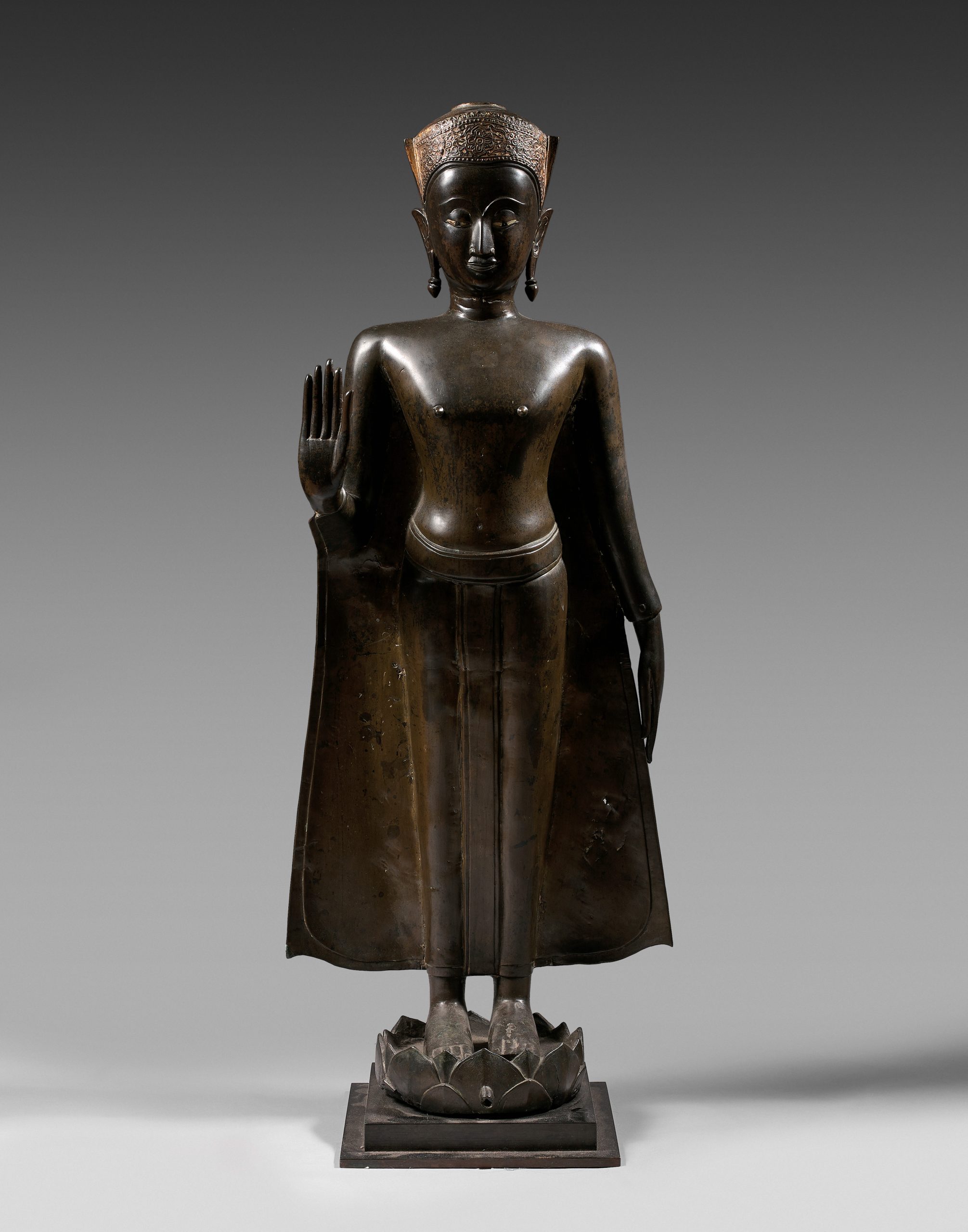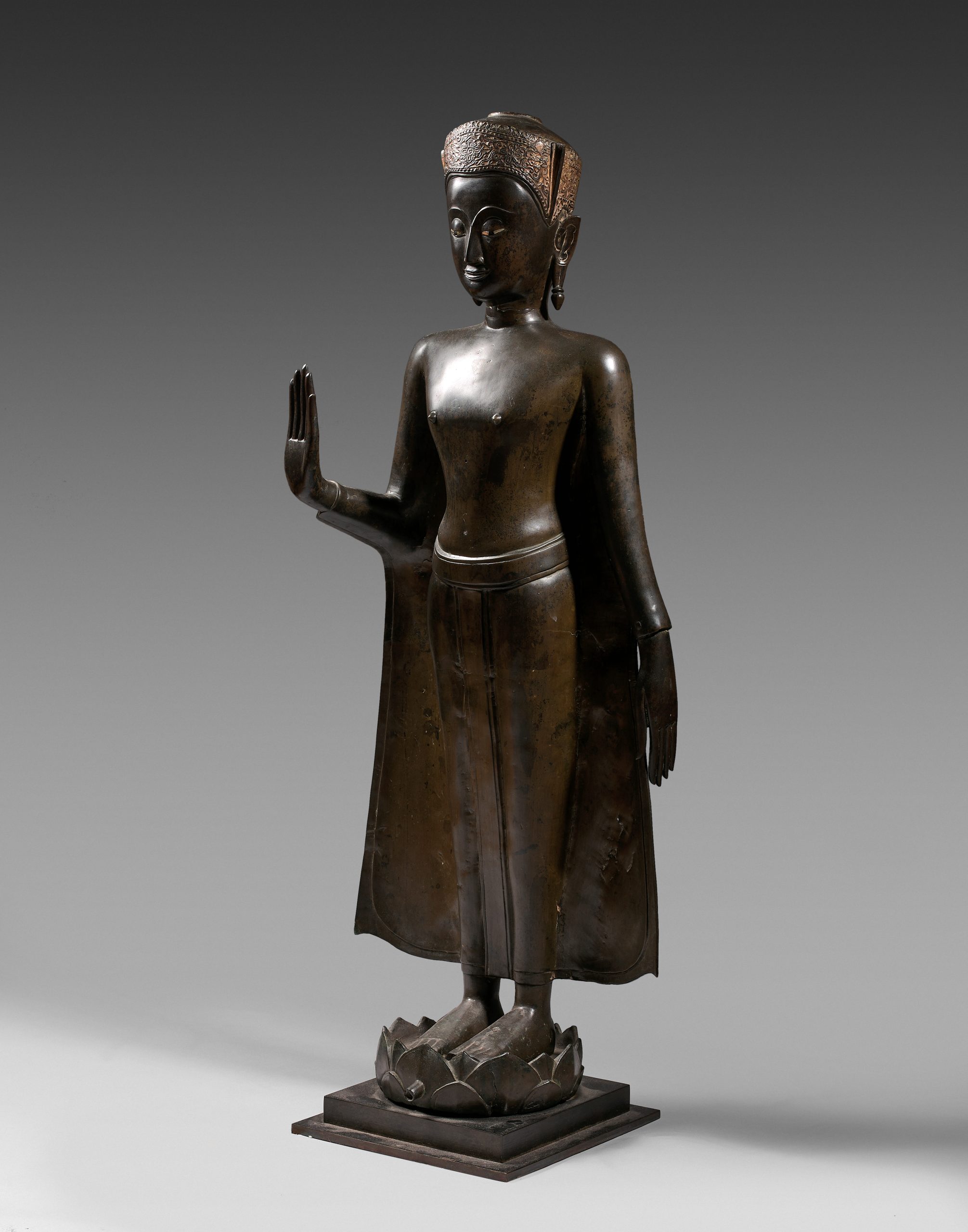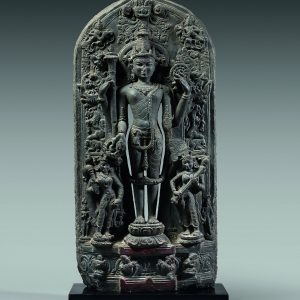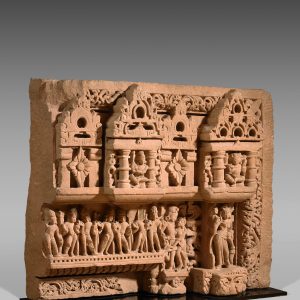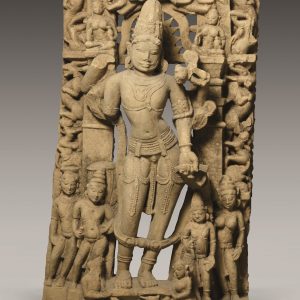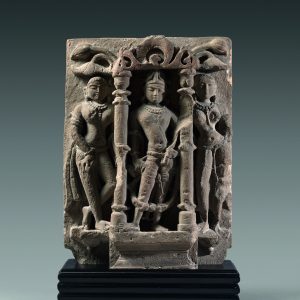Standing Buddha
29 000,00€
Bronze with brown and green patina
Ayutthayā, Thailand
17th century
H. 87 cm
Description
Ayutthaya, capital of the kingdom of Siam, was the cradle of a heterogeneous art whose stylistic influences emanated from the empires and kingdoms of Dvāravatῑ, Angkor and Sukhothai. This art, produced and disseminated throughout the kingdom, drew its inspiration from Buddhist scriptures. This 17th-century bronze Buddha, whose features easily reflect the Sukhothai imprint on Ayutthaya art, is a case in point.
Standing on a lotus, his highly stylised, lanky anatomy highlights the rigid, frontal aspect of the divinity, and thus his dehumanisation. The Buddha’s long, slender legs are covered by a dhoti, the flap of which reaches down to his ankles. The long, supple arms are reminiscent of those of the Sukhothai Buddha, whose distinctive shape is reminiscent of an elephant’s trunk. The Buddha is adorned with a crown, the golden patina of which highlights the floral and geometric decorations. His half-closed eyes reveal his peaceful attitude. The Sukhothai features are also evident on his face, where large, thin eyebrows extend to an aquiline nose. With his right hand, his fingers long and delicate, the Buddha performs the abhaya mudra, a sign of protection. The lobes of his ears are elongated because of heavy earrings. Buddhas of this type usually wear a flame on top of their cranial protuberance. This Buddha has lost his. This Buddha represents the prosperity and power of the Ayutthayā kingdom. Depicted in this majestic pose, standing and crowned, he is also the “universal sovereign” of Cakravartin.
Provenance: Galerie Annie Minet, then Moreau-Gobard from 1989.

